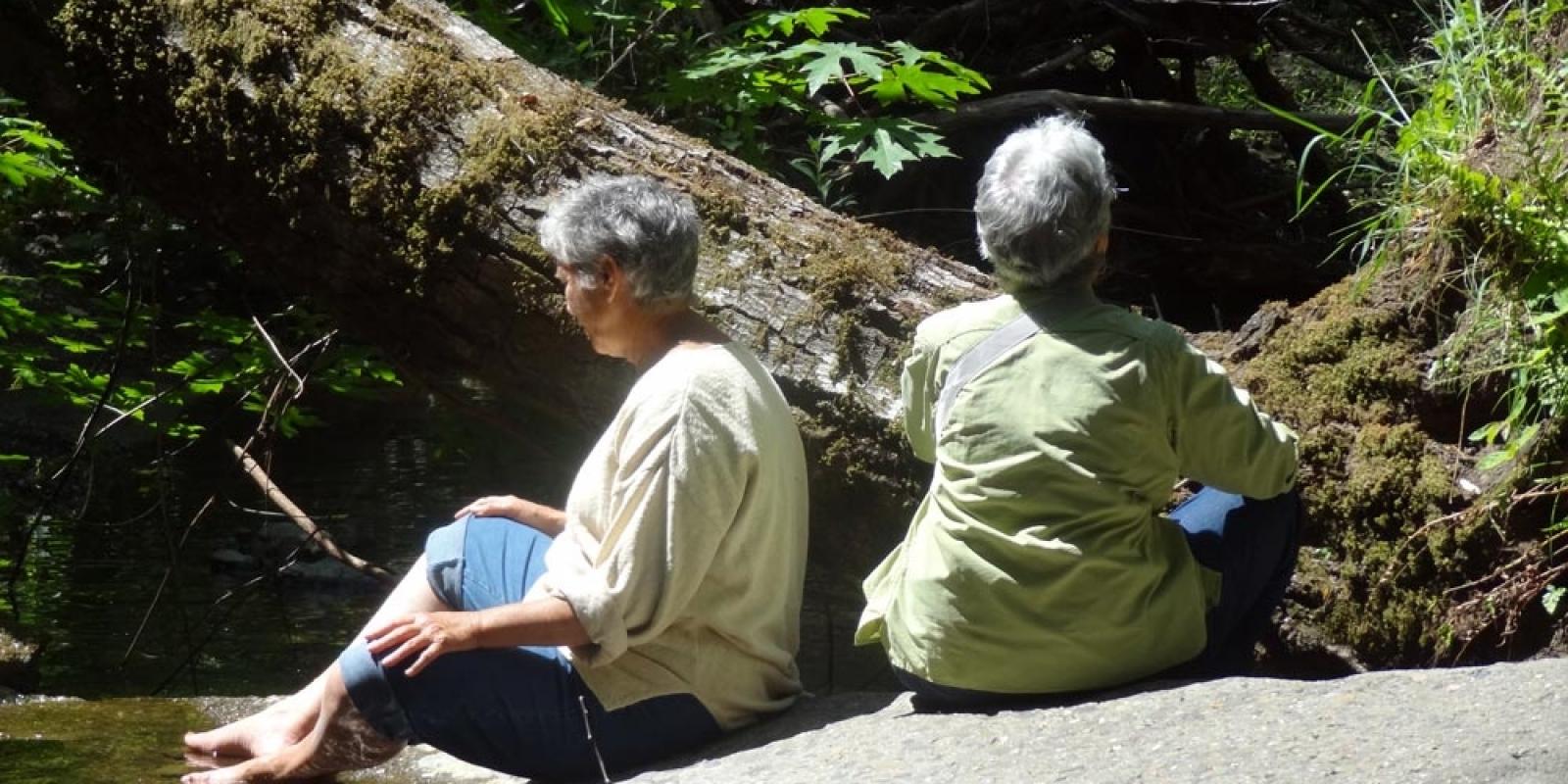With age comes wisdom. So, we’ve got that going for us. But at the same time many of our horizons seemingly contract. I’m a Boomer, so I grew up a free-range child, spending a great deal of time outdoors. It was routine for my group of friends to walk the 9 miles from where we lived among the oak forest and sandstone creeks in the foothills, to the beaches of Santa Barbara.
By the time I reached college I had become an avid rock climber. I studied martial arts five days a week, and every semester took gymnastics classes. One sunny morning I stepped outside and was overcome with gratitude for the incredibly joyful, electric feeling of my healthy, strong body.
And I knew it wouldn’t last. “Remember this,” I told myself.
My strength lasted well into my 30s. In my 40s and 50s it was fading, but still I had many adventures. I’ve walked across the Sierra Nevada alone. I’ve skied across the same range with two companions. Once I climbed Mt. Whitney solo on the Mountaineer’s Route. It was good to be strong and confident.
Now I am about to close my 60th decade. I have accumulated injuries. Fat. Surgeries. The days of strong confidence are behind me. The need to pursue difficult outdoor objectives, to “get there, do that,” has mostly faded. I still fantasize about making another climb on Yosemite’s El Capitan. And in just a few weeks I will be walking—at a leisurely pace—a 62-mile section of the Camino de Santiago in Spain. On the fifth day of that walk, I will celebrate my 70th birthday. A mile of walking for each year I have lived.
Switching to a Mellower Nature Interaction
Twelve years ago, I found another way of being in nature. By now most people have heard of the Japanese term “Shinrin-yoku,” which translates as “Forest bathing.” It’s a way of visiting nature that is more about being here than getting there. Think of it as bathing your senses in the ambience of the forest—its sights, sounds, textures, scents, and how the feeling of being in the forest unfolds with each bend in the trail, like a story of a simple journey. It’s a way of being in nature that is well within reach of those of us who may have aged beyond other outdoor activities.
‘The feeling of being in the forest unfolds with each bend in the trail.’
There is a rapidly growing body of research demonstrating the health benefits of this practice. It helps to regulate the nervous system, which in turn strengthens the immune system. Positive cardiovascular effects have been demonstrated. And it helps to lift one’s mood, to reduce anxiety, and encourage feelings of joy. Its multidimensional benefits are a wonderful fit to incorporate into wellness routines for those of us who are accumulating a stack of challenges.
One recent study concluded, “Forest baths can be considered as an alternative strategy to manage the risk of hypertension in older adults, due to their ability to induce relaxation and normalize blood pressure levels.”
Inspired by what few facts were available about the Japanese practice, I set out to develop a way of forest bathing. Starting in 2012, this became my full-time occupation. With a group of friends, every week I visited Sugarloaf Ridge State Park in California. The staff and park manager were wonderfully supportive of our project. We experimented to find a practice that met several criteria.
The walks were physically within reach of most people, as we used easy trails that looped no more than a half mile from where the cars were parked.
The terrain was friendly to those of us who had lost much of our agility.
The environment was beautiful, with a year-round running stream, plenty of wildlife, and great diversity of nature plant life.
There were emergency services nearby and readily available in case they were needed.
The trail had adequate infrastructure. Bridges at creek crossings, benches to rest on, restrooms.
Over the course of a year our team discovered a pattern of what we called “invitations.” These are activities that, done in a certain sequence, reliably helped those on the walks to renew their connections with themselves, with each other, and with nature.
And improve their health.
Our discovery became known as the “Standard Sequence” of forest bathing, which includes “guided sensory engagement and embodiment activities to connect with present moment and place”; “a series of invitations commonly improvised by guides and in cooperation with the land”; and “sharing of tea made with locally foraged ingredients and conclusion of walk.” It is now used globally and taught by at least a dozen guide-training organizations.
My company, the Association of Nature and Forest Therapy Guides and Programs, has trained roughly 3,000 guides who now lead forest bathing in 70 countries. When we started, forest bathing was all but unknown in the West. Now it is everywhere. And there are many opportunities to find guides who can introduce others to the practice.
M. Amos Clifford founded the Association of Nature and Forest Therapy Guides and Programs, and previously he founded and directed the Center for Restorative Process in Sonoma County, Calif. Photo courtesy of the Association of Nature and Forest Therapy Guides and Programs.
Photo caption: Women during a forest bathing program.
Photo credit: Courtesy the Association of Nature and Forest Therapy Guides and Programs.













